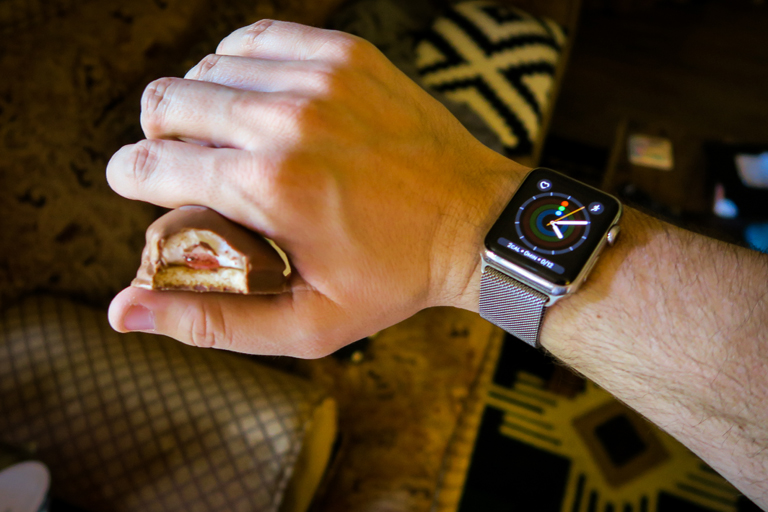
Wearable tech, like the smart watch, can be used to monitor exercise and eating habits.
By Charly SHELTON
January is health month, and it also coincides with the setting and rapid abandoning of New Year’s resolutions. At least half of all Americans who set New Year’s resolutions have health-related commitments, according to YouGov, an international research data and analytics group. And, according to Nielsen Analytics, only 64% of resolutions make it past January. So with this last week being crucial to keeping healthy habits going, now is a good time to take a look at some health apps and gadgets that can make getting in shape easier and more manageable.
Smart Watches
One of the biggest consumer-level tech advancements of the last decade was the wearable tech. That is, namely, the smart watch. Whether it’s Fossil, Samsung, Fitbit, Apple or any of the other numerous brands that have jumped on the bandwagon since these debuted, smart watches are here to stay. Of course the big name in smart anything is Apple, and the Apple Watch has several features to help with health tracking.
From blood oxygenation to heart rate to sleep tracking and miles walked, the Watch records it all. With slight variations, most of the smart watches out there can do basically the same thing. It isn’t going to tell you how much cholesterol is in that cake you’re about to take a bite of, but it can tell you how many calories you burned walking from the couch to the fridge and back to the couch where you’re going to eat it. And when you start sweating from chocolate frosting overload, it thinks you’re working out so you get a nice achievement for breaking a sweat. This is a great, positive motivator and support system if you’re actually on a run, but a little demoralizing if you’re on your second slice of cake.
Smart Ring
The new thing in wearable tech is the smart ring. The Oura Ring is exactly what you’d think – a ring that is worn on the hand – but this ring can do more than look flashy. It can track your pulse, activity, sleep patterns and even your body temperature throughout the day and night. This is among the first wave of smart rings with health features and, as this type of wearable picks up steam, expect to see more in the field of smart rings to compete with smart watches.
Smart Phones
While Apple Watches are becoming more and more commonplace and smart rings are the future, there is one tool that most everyone has for monitoring their health and may not even know about it – the smart phone. Whether it’s Apple’s health app or Google/Android’s Google Fit app, the app comes preinstalled on new phones and uses the phone hardware to track certain aspects of everyday life like counting steps, miles walked and stair flights climbed. This phone, if carried in a person’s pocket, can register quite a bit in terms of activity and calories burned but it can’t know everything. Some things like sleep times, water drunk and foods eaten can be logged manually in the provided health apps or in other apps available from the App Store or Google Play Store. The top apps for health are Calm, a meditation and mindfulness app, and MyFitnessPal by Under Armour, in which a user can log any workouts, amount of water consumed, sleep times and foods eaten.
Logging food can be difficult without having nutritional information in front of you and, if it’s a hassle, it’s easy to not do. So MyFitnessPal has a library of thousands of foods and brands already stored so entering meals can be as easy as “chocolate cake, Entemann’s, four slices” then hitting enter and all the calories and how many grams of sugar appear. This system does rely on honest and diligent self-reporting, so the results are only as good as the person who truthfully enters all four slices.
For all these apps and more, find the Health & Fitness tab on the Apple App Store or the Google Play Store.
